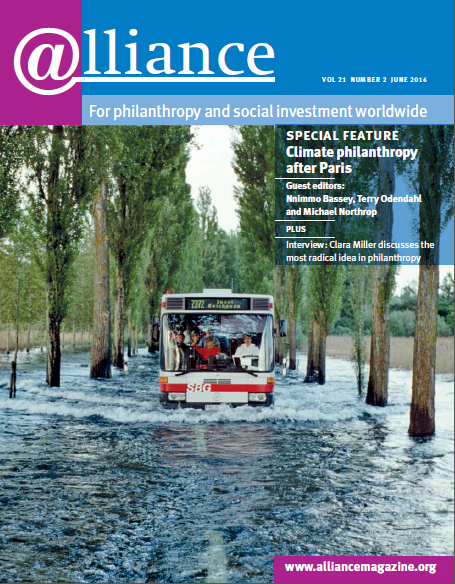We recognize the challenges for impact measurement described in Caroline Fiennes and Ken Berger’s article in the March 2016 issue of Alliance. Adessium Foundation is focused on generating impact across a variety of issues and themes captured in three programmatic areas. Assessing the impact of our interventions is key to our strategy, which can be described as a ‘learning by doing’ approach.
We are therefore drawing lessons from experiences gathered through our regular monitoring practices and occasional external evaluations. In our evaluation practice we do look back to learn, but essentially we have adopted a ‘forward-looking approach’. We ask ourselves what the grantee and the funder can learn from the experiences and how can we further improve our approach and interventions? Since 2010 we have implemented about 60 evaluations.
‘In our evaluation practice we do look back to learn, but essentially we have adopted a “forward-looking approach”.’
In our view much depends on the type of intervention a foundation is funding. We do not believe there is a one-size-fits-all approach to assessing impact. Instead, Adessium Foundation takes a somewhat pragmatic path:
- We most often provide institutional grants to our grantees – as opposed to funding for project activities. This gives recipients the flexibility to professionalize and invest in their monitoring and evaluation (read: learning) capacity.
- In recent years, we have focused our monitoring more on outcomes, and less on activities and efforts. We try to minimize the amount of indicators to limit the administrative burden.
- For grantees above a certain threshold, an external evaluation is part of the grant agreement. These provide an external view on the interventions and the organization and their main successes and challenges. They also provide the organization with critical reflection on its functioning and key results. Beyond that, the grantmaker can learn from these evaluations as it typically also reflects on the relationship with the grantee.
In conclusion, assessing impact is a way to learn. In our opinion, it’s a missed opportunity not to invest in learning because we can and should always get better at what we do.
Pieter Stemerding
Managing director, Adessium Foundation
On the same topic: ‘See yourself as others see you’ by Amy Arbreton.






Comments (0)